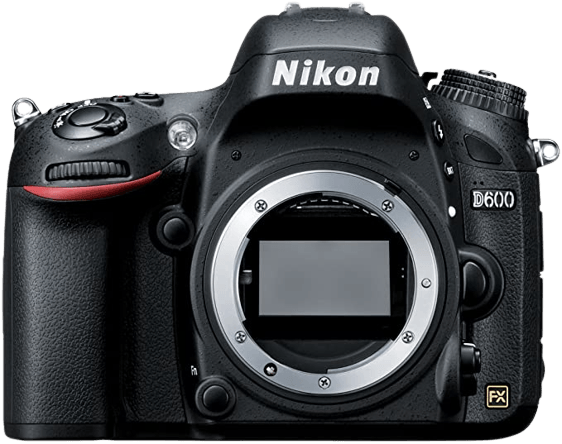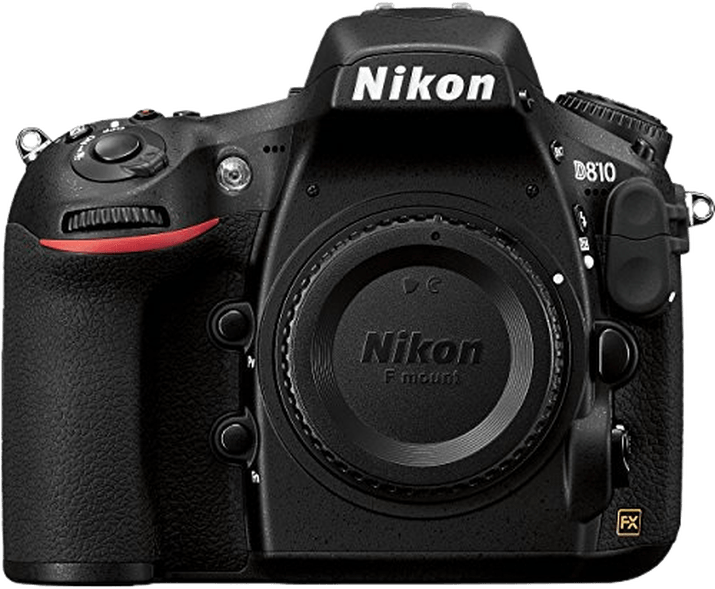Nikon D600 vs D810 Comparison
Nikon D600

Nikon D810

The Nikon D810 emerges as the winner with a score of 72/100, while the Nikon D600 trails behind at 66/100. Both cameras are DSLR models, released in 2012 and 2014, respectively. They share the same camera depth of 82mm, but the D810 is slightly larger and heavier, measuring 146 x 123mm and weighing 980g.
The D810 outperforms the D600 with its higher launch price of $3300, compared to the D600’s $2100. This price difference reflects the D810’s superior features and overall quality. However, the D600 does have an advantage in terms of size and weight, making it more portable and easier to handle.
Weighing the differences, the D810’s higher score indicates it as a better camera, while the D600 offers a more budget-friendly and compact alternative.
Nikon D600 vs D810 Overview and Optics
The Nikon D810 outperforms the Nikon D600 in optics with a score of 76/100 compared to the D600’s 70/100. Both cameras share some common specifications, such as the CMOS sensor type, full-frame sensor size, Nikon F FX lens mount, and the absence of image stabilization.
The D810’s superior optics can be attributed to its higher megapixel count of 36.3, compared to the D600’s 24.3 megapixels. This difference allows the D810 to capture more detail and produce higher resolution images. Additionally, the D810 features an upgraded Expeed 4 processor, which contributes to better image processing and overall performance. The D810’s sensor also has a higher DXOMARK score of 97, compared to the D600’s score of 94, which signifies better image quality and color depth.
On the other hand, the D600 has a slightly faster shooting speed of 5.5 frames per second, compared to the D810’s 5 frames per second. This advantage may be useful in situations where capturing fast-paced action is essential, such as wildlife or sports photography.
In terms of optics, the Nikon D810 is the clear winner, offering higher resolution images, better image processing, and a superior sensor. The D600, while still a solid choice, falls short in these aspects. However, its faster shooting speed may be an advantage for certain types of photography. Ultimately, the choice between these two cameras will depend on individual preferences and specific photography needs.
Nikon D600 vs D810 Video Performance
The Nikon D810 outperforms the Nikon D600 in video capabilities, scoring 70/100 compared to the D600’s 57/100. Both cameras share some common specifications, such as Full HD maximum video resolution and 1920 x 1080 maximum video dimensions. Additionally, both cameras have built-in time-lapse functionality.
The Nikon D810’s higher score is due to its superior maximum video frame rate of 60fps, which is double the D600’s 30fps. This difference allows the D810 to capture smoother and more detailed video, particularly in fast-moving scenes. The increased frame rate also enables better slow-motion video playback, providing more creative options for filmmakers and videographers.
While the Nikon D600 has a lower video score, it still offers decent video capabilities for casual users or those on a tighter budget. The Full HD resolution and built-in time-lapse functionality are useful features for everyday filming and basic video projects. However, for more professional or demanding video work, the D600’s lower frame rate may be a limitation.
Considering the video capabilities of both cameras, the Nikon D810 is the clear winner, providing smoother and more detailed video with its 60fps frame rate. This feature makes it a more suitable choice for professional videographers and filmmakers. On the other hand, the Nikon D600 remains a viable option for casual users or those with budget constraints, offering satisfactory video quality with its Full HD resolution and time-lapse functionality.
Nikon D600 vs D810 Features and Benefits
The Nikon D810 outperforms the Nikon D600 in the features category with a score of 59/100, compared to the D600’s score of 57/100. Both cameras share several specifications, such as a 3.2-inch screen size, no touchscreen, no flip screen, no GPS, WIFI capabilities, and no Bluetooth.
The D810 has a higher screen resolution of 1,229,000 dots, making it superior to the D600’s 921,000 dots. This increased resolution provides clearer and sharper image previews, allowing for better evaluation of photos and easier menu navigation.
However, the D600 does not have any particular features that are better than the D810. Both cameras have the same screen size and lack of touchscreen, flip screen, GPS, and Bluetooth. The only difference between the two cameras in terms of features is the screen resolution.
Considering the specifications, the Nikon D810 is the winner in the features category. Its higher screen resolution enhances the user experience by providing clearer image previews and easier menu navigation. While the Nikon D600 does not have any distinct advantages over the D810 in terms of features, it still offers a comparable experience with the same screen size and connectivity options.
The Nikon D810’s higher score reflects its better features, specifically the higher screen resolution. This advantage contributes to an overall improved user experience when compared to the Nikon D600.
Nikon D600 vs D810 Storage and Battery
The Nikon D810 outperforms the Nikon D600 in storage and battery with a score of 79/100, compared to the D600’s 71/100. Both cameras share similarities, such as having two memory card slots and accepting SD, SDHC, and SDXC memory cards. They also use the same battery type, EN-EL15, and neither offers USB charging capabilities.
The D810 surpasses the D600 in battery life, providing 1200 shots compared to the D600’s 900 shots. Additionally, the D810 supports Compact Flash and UDMA memory cards, expanding storage options beyond those of the D600.
However, the D600 still delivers a decent battery life, allowing photographers to capture 900 shots before needing a battery change. This may suffice for casual or amateur photographers who do not require extended shooting periods.
Considering these factors, the Nikon D810 proves to be superior in storage and battery performance, making it the ideal choice for photographers needing extended battery life and expanded storage options. On the other hand, the Nikon D600 remains a viable option for those with less demanding storage and battery requirements.
Nikon D600 vs D810 – Our Verdict
Are you still undecided about which camera is right for you? Have a look at these popular comparisons that feature the Nikon D600 or the Nikon D810:

